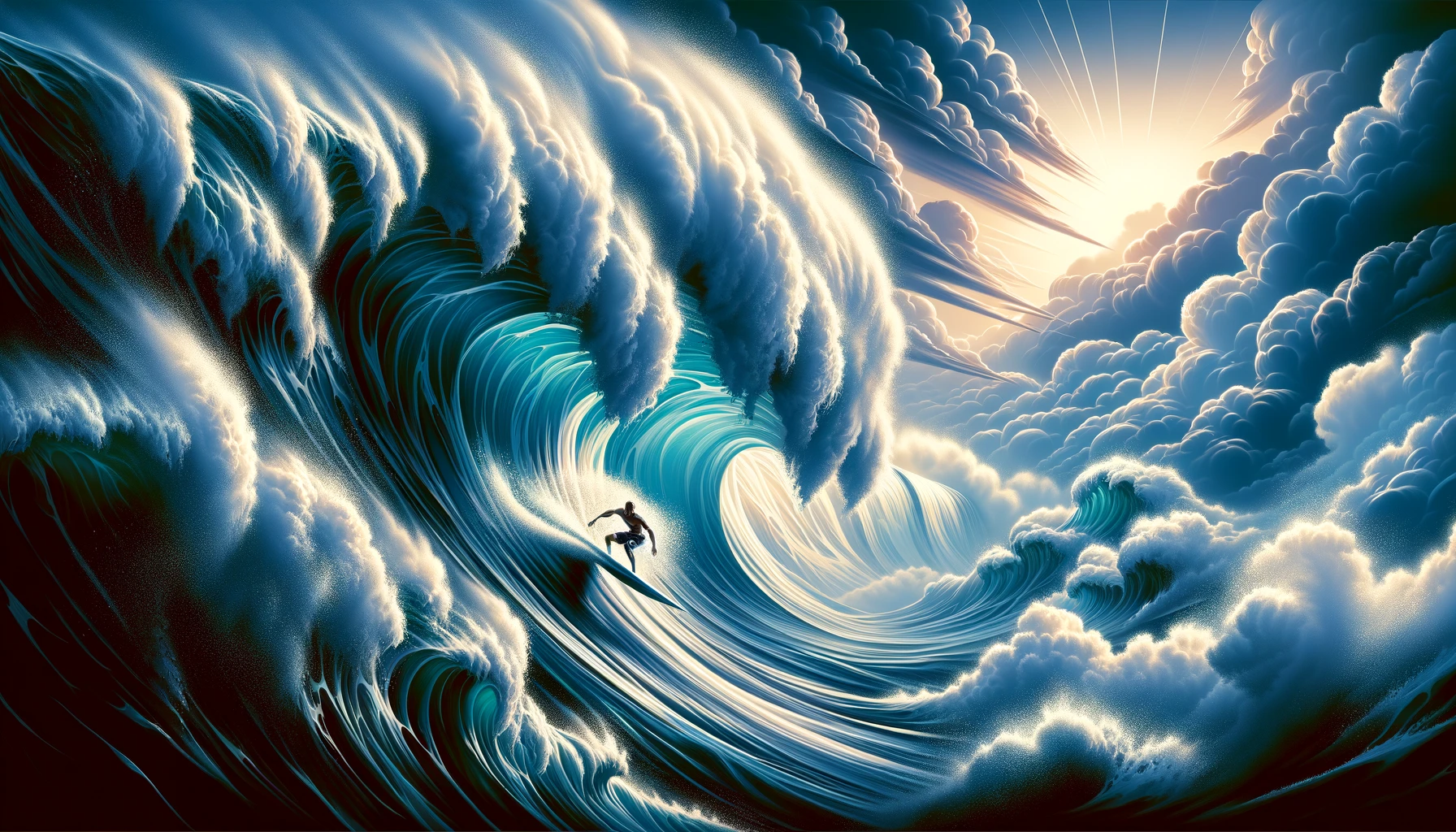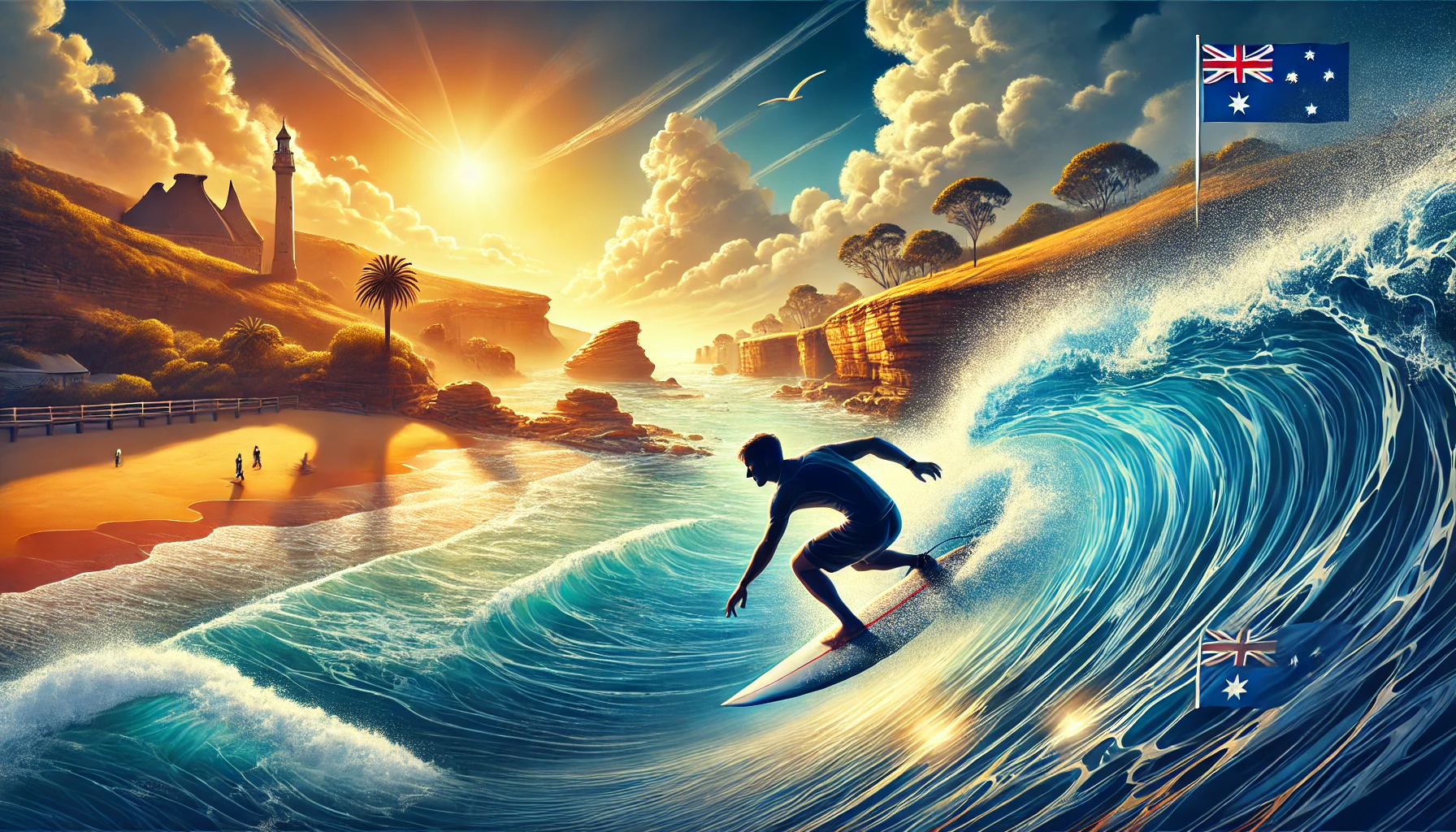Big wave surfing is one of the most exhilarating and dangerous disciplines in the world of surfing. The sheer size and power of the waves in these conditions are enough to test the skill, courage, and determination of even the most experienced surfers. For those who crave the thrill of pushing their limits, big wave surfing offers the ultimate challenge. In this article, we’ll explore what big wave surfing is, the most famous big wave spots around the world, the techniques and equipment used, and the risks involved in riding these colossal waves.
What is Big Wave Surfing?
Big wave surfing involves riding waves that reach heights of 20 feet (6 meters) or more. In some cases, these waves can even tower above 60 feet (18 meters). Unlike regular surfing, which is done in smaller and more manageable waves, big wave surfing requires specialized skills, equipment, and mental fortitude.
In big wave surfing, timing, technique, and preparation are everything. Surfers must be ready to face the immense power of the ocean and understand the behavior of the waves they are attempting to ride. The consequences of a mistake in big wave surfing can be severe, making this a sport only for the most dedicated and fearless surfers.
Famous Big Wave Surfing Spots
Big wave surfers travel the world in search of the biggest and most challenging waves. Here are some of the most iconic big wave spots:
1. Mavericks (California, USA)
Located off the coast of Northern California, Mavericks is one of the most famous big wave spots in the world. When conditions are right, waves at Mavericks can reach heights of over 60 feet. The break is known for its cold water, strong currents, and powerful waves, making it a prime destination for big wave surfers.
2. Jaws (Peahi, Hawaii)
Jaws, located on the north shore of Maui, is considered the pinnacle of big wave surfing. When the winter swells arrive, waves at Jaws can exceed 70 feet. The speed and ferocity of the waves make Jaws a place where only the world’s top big wave surfers dare to compete.
3. Nazaré (Portugal)
Nazaré has gained international recognition for producing some of the biggest waves ever surfed. In 2011, a 78-foot wave was ridden here, setting a new world record. The underwater canyon near Nazaré amplifies the power of the Atlantic Ocean, creating waves that regularly exceed 80 feet.
4. Teahupo’o (Tahiti)
Teahupo’o is known for its thick, heavy waves that break over a shallow reef. While not always the tallest waves, Teahupo’o’s unique shape and power make it one of the most dangerous and awe-inspiring big wave spots in the world.
5. Shipstern Bluff (Tasmania, Australia)
Shipstern Bluff is infamous for its unpredictable and terrifying waves, which feature steps and ledges that make riding them extremely difficult. The rugged location and challenging waves attract only the bravest of surfers.
Techniques and Equipment for Big Wave Surfing
Riding big waves requires more than just courage – it demands precise technique and the right equipment.
1. Tow-In vs. Paddle-In Surfing
Traditional big wave surfing involved paddling into the wave, but as waves grew larger and faster, surfers began using jet skis to tow them into position. Tow-in surfing allows surfers to catch waves that would be impossible to paddle into due to their size and speed. However, in recent years, there has been a resurgence of paddle-in big wave surfing as surfers push their limits without mechanical assistance.
2. Specialized Surfboards (Guns)
Big wave surfers use specially designed surfboards known as “guns.” These boards are longer, thicker, and narrower than typical shortboards, providing greater stability and speed when riding giant waves. Guns are built to handle high speeds and maintain control on steep, fast-moving waves.
3. Inflatable Vests and Safety Gear
Given the extreme danger of big wave surfing, safety gear is a must. Many big wave surfers wear inflatable vests that can be activated if they wipe out and are held underwater for an extended period. These vests help bring the surfer back to the surface quickly. Additionally, surfers often have rescue teams on jet skis ready to assist in case of emergencies.
Risks and Dangers of Big Wave Surfing
Big wave surfing is not for the faint-hearted. The risks involved are significant, and even the most experienced surfers must be fully prepared for the challenges they face.
1. Drowning
The most obvious danger in big wave surfing is drowning. When a surfer wipes out on a big wave, they can be held underwater for an extended period, with the force of the water making it difficult to surface. Additionally, multiple waves can break in quick succession, leaving the surfer with little time to recover.
2. Injury from the Reef
Many big wave spots break over shallow reefs, increasing the risk of injury. Being slammed onto a reef by a powerful wave can result in severe cuts, fractures, and other life-threatening injuries.
3. Impact of the Wave
The sheer force of a big wave can cause significant physical harm. The impact can knock the wind out of a surfer, making it difficult to breathe and increasing the chances of drowning.
4. Hypothermia
Some big wave locations, like Mavericks, are known for their cold water temperatures. Extended exposure to cold water can lead to hypothermia, making it difficult for the surfer to move and react quickly.
The Thrill and Community of Big Wave Surfing
Despite the risks, the allure of big wave surfing lies in the challenge and the sense of accomplishment that comes from conquering nature’s giants. The big wave surfing community is tight-knit, with surfers often relying on each other for support, advice, and rescue when needed. Competitions like the Big Wave Tour and events like the Eddie Aikau Invitational showcase the best big wave surfers in the world, inspiring new generations of thrill-seekers to take on the challenge.
Conclusion
Big wave surfing is one of the most extreme sports on the planet, combining skill, courage, and respect for the power of the ocean. Whether you’re a seasoned surfer looking to take on bigger challenges or simply an admirer of those who ride these giants, big wave surfing represents the pinnacle of human determination and the spirit of adventure.




